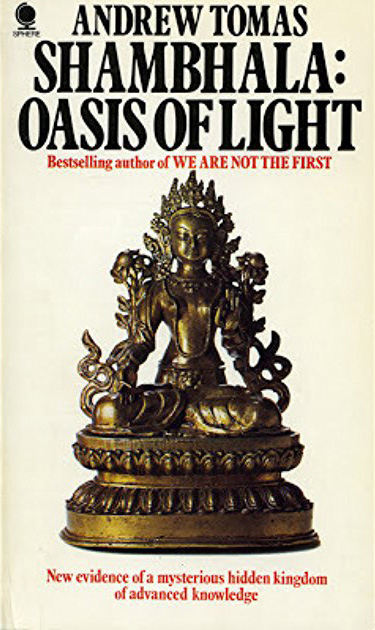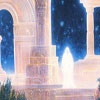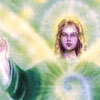Shambhala: Oasis of Light
 By Andrew Tomas
By Andrew Tomas
Introduction
A different theme demands an unconventional approach in the method of research, hence our choice of the aphorism of Pythagoras, ‘walk in  unfrequented paths’. A new idea, no matter how unusual, must be a contribution to the already accumulated pool of knowledge. It must be validated by fact so as not to remain for ever in the realm of pure speculation, and also have some pragmatic value, otherwise it would be useless.
unfrequented paths’. A new idea, no matter how unusual, must be a contribution to the already accumulated pool of knowledge. It must be validated by fact so as not to remain for ever in the realm of pure speculation, and also have some pragmatic value, otherwise it would be useless.
During Krishna’s times the pundit Narada warned about the danger of a hasty condemnation of fresh thoughts: ‘Never utter these words – I do not know this, therefore it is false – one must study to know, know to understand, understand to judge.’ The intolerance amidst which modern science was born can serve as an example of the fallacy of rejecting novel concepts and untried methods.
In an atmosphere of narrow-mindedness and persecution during Cromwell’s reign, progressive scholars of England founded the Invisible College which has eventually become the highest scientific institution of the kingdom, the Royal Society. Hardly anything is known of the activities of another ‘invisible’ scientific and philosophic society which pursues its studies in the majestic isolation of the Himalayas. These savants possess the answers to the most abstruse questions of science.
The traces of this philanthropic and philosophic fraternity are found in historical records from the most ancient times to our contemporary period. The evidence demonstrating the actual existence of these sublime men in the past, as well as in the present, is sufficient, yet the information as to their way of life and the location of their abodes is far from being adequate.
Scepticism has acted as a double-edged sword. On the one hand it destroyed worthless theories, on the other it has cut up many a sane, though premature, hypothesis. This sword should not be used to murder concepts that would be lamented a few decades hence. The history of science abounds in tragic accidents of this kind.
In 1838 a physician tried to convince a lady that her husband’s hobby of catching human shadows on copper plates was a certain sign of his insanity. The doctor gravely advised the lady, whose name was Daguerre, to take Monsieur Daguerre to the Bicetre Mental Asylum in Paris. Fortunately for Louis Daguerre the Academie des Sciences of France soon save the inventor form this sad fate by endorsing his discovery of photography.
What is reality? Is it a bit of nothing? Yet when this air is pumped into a tire, it becomes as hard as wood. There is one reality for playing children and another for adults; one for a nuclear physicist occupied with the infinitely small world of the atom, and another for a layman who is touching solid objects around him; one for an astronomer studying stellar systems of giant proportions, and another for a simple mind observing those ‘little stars; in the sky; one for an historian who sees the flow of events and the development of society in the course of centuries, and another for a man in the street who lives only in the present and is incapable of perceiving the life of mankind as a whole. In this relativist century reality depends on the observer. This book examines one facet of what may be termed ‘non-ordinary reality’.
What is truth to one is not truth to another. Since there are many truths in this vast universe, we should respect each other and mutually benefit from the exchange of ideas, even though they might seem strange.
This work propounds that there is an oasis of cosmic culture on earth, the representatives of which have, like a guiding star, led humanity through the centuries towards a greater stage of understanding, higher morals and a keener realisation of the brotherhood of man. The answer to whether or not present-day society would follow their beacon in this critical epoch, lies in the future.
There are two kinds of people – those who recognise a truth first and the ones who admit it last. It is the pioneers who have always advanced culture and civilisation as the history of science, art and philosophy can demonstrate.
There are no rolls of honour anywhere for those who rejected he spherical shape of the earth, the Theory of Relativity, steamships, aeroplanes or spaceships, but there are monuments to the creators of bold ideas.
As yet the thesis of a hidden community of perfect beings guiding the evolution of mankind belongs to the realm of speculation, but like the conquest of space, which most people ridiculed until the launching of Sputnik I, it may eventually be shown to be true. In the meantime, let the reader peruse these pages with a mind ready to accept the logic they may contain.
See full PDF book download here.
Posted in Other Topicswith 1 comment.






On of the best books on this subject.